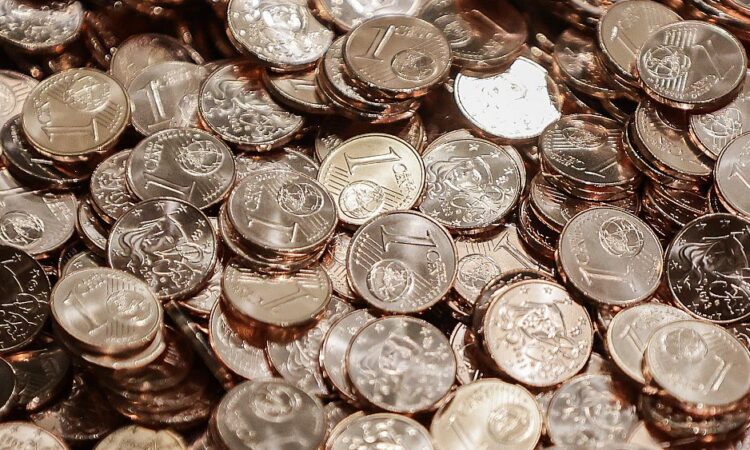
In 2022, European households save 1/8 of their income, according to latest data. However, in which country do people save the most ? Euronews Business takes a look.
To save or not to save, that is the question. Last year, Europeans chose to save 1/8 of their income, according to the latest data released by Eurostat, the EU’s statistical office.
In 2022, households in the EU saved on average 12.7% of their disposable income, while the rate for the euro area was higher, at 13.7%.
Household disposable income is what households have available for spending and saving after taxes and transfers, as defined by Eurostat.
“If households earn 100 euros, they spend 78.3 euros and are left with 12.7 euros to spend,” chief economist at Astères, Sylvain Bersinger, explained. “It’s a normal figure. Most countries in the EU have a household saving rate between 10% and 15%,” he added.
A much higher figure than in the United States, where residents only saved 3.4% of their income in September 2023, according to Statista.
Germany is the European champion
In the EU, Germany reached the top podium spot with the highest gross saving rate (19.91), the Netherlands earned the silver medal (19.44) and Luxembourg the bronze (18.14).
Two countries are in the red, with negative saving rates: they spend more than they earn. What they are earning is not enough to finance their consumption so they borrow or use savings they have accumulated in the past. These two countries are Poland and Greece.
However, European households can’t be summed up in one profile. Large differences exist in saving behaviours in Europe, “as much as across families,” Luigi Guiso, research fellow at the Center for Economic and Policy Research (CEPR) explained. “There are some who spend it all and those who save a large chunk of their income but it’s difficult to understand why.”
Wealth is certainly one factor to account for systematic disparities in household saving rates. “We see that countries with lower income levels are struggling to meet their needs and therefore able to save very little,” the chief economist at Asteres, Desringer, observed.
It’s also the case in Greece which has experienced great economic difficulties and imposed a series of austerity measures, decreasing households’ disposable income.
“The negative saving rate shows that the Greeks are not out of the crisis yet. On the other hand, countries with the most savings tend to be richer,” Desringer noted.
Some experts point out cultural differences in saving habits. Germans consistently saved more than 8% of their disposable income over the last two decades, according to OECD data.
However, Luigi Guiso finds limits to this explanation. “Differences between Germany and Greece don’t exist because Greeks like to spend everything and Germans do not. German saving rates used to be low 20 years ago.“
The saving rate of a country is affected by many economic variables, such as the demographic structure of the country. “Young people tend to save more than retired people who have a lower income flow,” Guiso explained.
A return to pre-pandemic levels
Europeans saved less in 2022 than in 2021 (16.4%), Eurostat also revealed, allowing household consumption to expand further with the household rate returning to its pre-pandemic levels.
“It reflects a desire of returning to normal, pre-COVID life,” Helene Baudchon, economist at BNP Paribas, commented.
“During the pandemic, Europeans’ household consumption was suspended while their income was broadly preserved. This caused an abnormal jump in the saving rate across the EU,” Baudchon analysed.
Meanwhile, 2022 marked an economic rebound phase, which explains the lower saving rate compared to the previous year.
However, successive shocks post-pandemic, including Russia’s invasion of Ukraine and the associated rising living cost, have also disrupted household saving behaviour. “The economic uncertainty is likely weighing on household consumption and supports precautionary saving,” she observed.
Another factor motivating Europeans to save rather than spend is the rising interest rates. “Today, credit is more expensive and savings are more remunerated: there’s a real financial incentive to keep your money in the bank.”
Will the savings rate improve?
Experts forecast little change in next year’s household saving rates.
“We’re predicting a slightly more positive story next year. As inflation is falling and if the effects of economic shocks dissipate, households are likely to be less worried about the future and save less,” Baudchon said.
The household saving rate would either remain the same or drop. “But forecasting means there is a possibility for error so let’s talk in a year’s time to see whether we were right,” she added.






